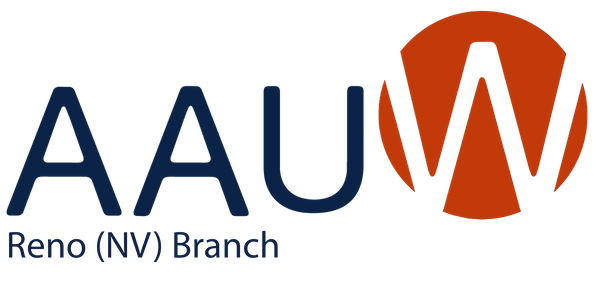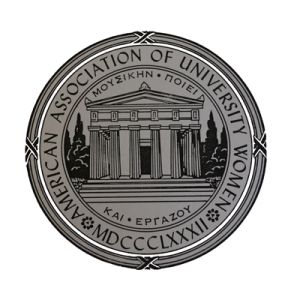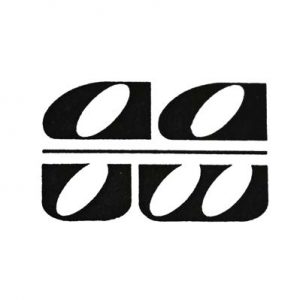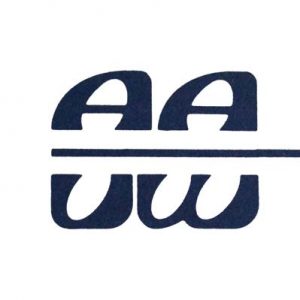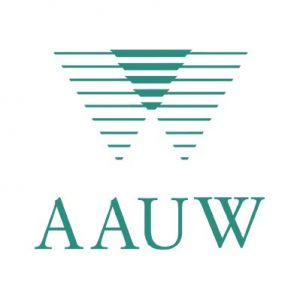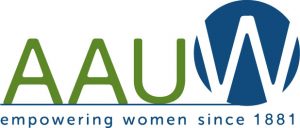1880s / In the Beginning
On November 28, 1881, Marion Talbot and Ellen Richards meet in Boston with fifteen alumnae representing eight colleges to discuss the needs of college-educated women.
On January 14, 1882, sixty-five alumnae of eight colleges join together to formally establish the Association of Collegiate Alumnae (ACA), later merging with two other collegiate women’s associations to become the American Association of University Women (1921).
In 1884, branches are admitted as local groups with the provision that they carry on the work of the larger association in addition to their independent work. Washington, D.C., is home to the first branch.
The first AAUW logo appears in December 1898. The Association of Collegiate Alumnae seal is then adopted in 1902.
1900s
The study of equal pay begins in 1907: At the ACA’s 25th anniversary meeting, founder Ellen Richards presents Desirable Tendencies in Professional and Technical Education for Women, which details her survey of the status of college women twenty-five years after the organization’s founding. She questions whether college-educated women are receiving equal compensation for their work and urges the ACA to ensure “that where women of college training are concerned . . . they should receive recompense equal to that of any other similarly engaged.”
1910s
[In 1914, women in Nevada were granted suffrage.]
On March 28, 1917, fifteen college alumnae meet in Reno for the purpose of organizing the Nevada Division of the Association of Collegiate Alumnae (ACA) in order to secure recognition for the University of Nevada by the American Association of Universities (which was achieved in November 1920) and to establish a scholarship fund for qualified women students at the University of Nevada. The group later becomes the Reno Branch of AAUW.
1920s
[Ratified on August 18, 1920, the 19th Amendment to the U.S. Constitution granted American women the right to vote.]
1918: Dr. Anne Martin, member of the Reno Branch and a leader in the push for women’s suffrage in Nevada, becomes the first woman to run for the U.S. Senate (also doing so in 1920).
In 1920, Marie Curie, a future Nobel Prize-winning scientist, receives contributions from American women, including some ACA members, for the purchase of one gram of radium in order to continue her research. Curie’s daughter later returns a portion of unused money to AAUW, which uses it to create the endowment that funds the Marie Curie Postdoctoral Fellowship.
1921: The Reno Branch Scholarship award is presented at the University of Nevada, $100 per semester; it was renamed the Theodora Stubbs Fulton Memorial Scholarship in December 1924. Payment is suspended in December 1932 because all funds were deposited in closed banks.
1924: A book project begins, the collection and publication of stories of pioneer Nevada: The Drama of Virginia City (1925) and Mark Twain in Nevada (1927). In addition, there is a project to collect biographies of pioneer Nevada women; it is not published but eventually developed into an essay contest sponsored by the Nevada State Division of AAUW.
1930s
On its 50th anniversary in 1931, AAUW has 521 branches and 36,800 members. By 1949, those numbers have risen to 1,097 branches and more than 108,000 members.
During the 1930s, study groups became an important part of Reno Branch membership and programs. The focus on fundraising for scholarships changes to monies for AAUW fellowships.
1935: Reno Branch sends telegrams to Nevada U.S. senators urging their support for the Protocol of Adherence to the World Court; the branch is unable to persuade Senator Patrick McCarran to vote for it.
1940s
1941: Reno Branch takes an active role in placing European refugee children in Reno homes (six British children are placed) and raises money to help refugee members of the International Federation of University Women.
1942-1945: Reno Branch members work with such organizations as the Red Cross, USO, AWVS, and civilian defense. The branch furnishes a day room at the Reno Army Air Base (Stead). Dues are paid by the branch for members who joined the armed services so they did not have to resign. The entire branch program for 1943-1944 becomes a kind of study group in international relations.
November 1944: Mildred Bray, Superintendent of Public Instruction, speaks to Reno Branch on the shortage of teachers and the difficulty of keeping rural teachers because of housing and low wage issues.
1944-1945: A co-operative nursery school is organized under AAUW auspices; by the 1950s it becomes an independent project.
May 8, 1945: AAUW supports the first federal pay equity legislation.
In 1946, after being a vocal advocate for the establishment of the United Nations, AAUW is granted permanent U.N. observer status.
1946-1949: Reno Branch supports state legislation to improve care at the Nevada State Hospital for Mental Disorders and encourages support for a hospital solely for the care of tubercular patients, as well as the needs at the Washoe County hospital.
In June 1949, AAUW revises its bylaws to state that the only requirement for membership is a college degree, thereby reaffirming that women college graduates of all races are eligible for membership.
1950s
November 1950: Reno Branch issues a survey report concerning physically handicapped children (including those with serious speech, sight, or hearing difficulties) who are unable to attend regular school. The ultimate aim of the report is to secure education and training for these children.
1953-1954: Reno Branch’s International Relations study group assists the Washoe County Library in organizing their United Nations Educational Center. The group substitutes their April meeting with attendance at the speech given at the University of Nevada by Eleanor Roosevelt on April 4, 1954, “National and World Affairs and the United Nations.”
1956: Rachel Carson is given the AAUW Achievement Award and uses the money awarded to do the research for and writing of Silent Spring (published in 1962).
1958-1959: Reno Branch and the Sparks Branch join forces to produce “A Report of Intellectually Gifted Children Survey” and sends the study to national AAUW for publication in the national journal.
1960s
1965: Reno Branch presents its first Children’s Theater production; four performances of The Nutcracker Prince raise $300 for the YWCA building fund. The Children’s Theater becomes a permanent project of Reno Branch through 1988, providing children with performing experience as well as enjoyment as part of a live theater audience. Proceeds provide scholarship money for women graduate students in music, drama, speech pathology, or related fields.
1968: AAUW embarks on an environmental program, “This Beleaguered Earth–Can Man Survive?” and urges branch members to study environmental problems in their communities.
1969: The AAUW Educational Foundation establishes the Coretta Scott King Fund, which provides scholarships to African American women to study history, culture, and peace.
The lowercase AAUW logo is adopted in 1970.
1970s
At the 1971 convention, AAUW members pass a resolution supporting the Equal Rights Amendment.
1974: Reno Branch prints a special project report, “In and About Reno,” with cover art by Patty Atcheson.
1975: The AAUW Action Fund Capitol Hill Lobby Corps is formed to monitor congressional hearings and lobby for bills that match AAUW’s legislative program.
1975: Beginning in April of this year, Reno Branch organizes a tour of historic homes as a fundraiser for AAUW fellowships.
1977: Member of the Reno Branch and member of the Nevada State Assembly Sue Wagner is named one of 10 “Outstanding Young Women in America for 1976,” selected from the group of 51 women (representing 50 states and the District of Columbia) chosen out of 27,000 women recommended by women’s organizations. She later serves as a Nevada state senator and becomes the first woman to be elected lieutenant governor of Nevada.
In 1982 an uppercase variation of the 1970 logo is adopted.
1980s
1980: Reno Branch is awarded a Title I continuing education grant in conjunction with the University of Nevada’s Department of Home Economics to operate a “warm line,” a telephone counseling service for parents with small children who have questions or worries concerning various child care problems. Funding is received in July 1980, and the warm line is activated in September.
1981: AAUW establishes the Legal Advocacy Fund to support women who seek justice in instances of sex discrimination in higher education. Two years later, it becomes a separate AAUW corporation.
1984: Reno Branch receives a third place Public Information Award from national AAUW for its public education program on the Child Passenger Restraint Law. Reno Branch had done a study of child restraint laws in twenty-one other states and joined forces with Assemblywoman Courtenay Swain and Senator Sue Wagner to encourage passage of the Nevada legislation. The law becomes effective July 1, 1983, requiring a safety seat for children under five years of age.
June 1987: AAUW votes to extend membership to male college graduates.
An updated logo is adopted in 1990.
1990s
1992-1993: To celebrate Reno Branch’s 75th anniversary, a dinner celebration and fundraiser is held and features Sarah Weddington as the speaker. The attorney for Jane Roe in Roe v. Wade, Weddington remains, at the age of twenty-seven, the youngest person to argue (in 1971 and again in the fall of 1972) a successful Supreme Court case.
1993: Through the hard work of the AAUW Lobby Corps, the Family Medical Leave Act passes.
2000s
2002: AAUW hosts its first National Conference for College Women Student Leaders (NCCWSL) at American University in Washington, D.C. More than 250 students attend.
2003: Reno Branch receives national recognition with an AAUW 21st Century Recognition Program Award (Platinum) for a project that supports communication between Hispanic parents of students and Galena High School staff and teachers, working with the Miguel Ribera Family Resource Center located at Pine Middle School. Volunteer ESL tutoring with Pine Middle School students also becomes an activity for branch members in this decade.
2005: The statue of Sarah Winnemucca (1844-1891), the second Nevada sculpture given to the National Statuary Hall Collection, is presented at the U.S. Capitol. Reno Branch collaborated with the Nevada Women’s History Project to raise funds for the design and creation of this statue honoring the Paiute spokesperson, author, and teacher.
2006-2008: Reno Branch contributes local scholarship monies (used for tuition and child care) to the Truckee Meadows Community College Re-entry Center (offering assistance to women returning to school through education, vocational training, and job-search skills). Reno Branch also provides tuition funds for girls from local middle schools to attend the Girls Math & Technology Program camp at the University of Nevada, Reno (UNR).
2008: AAUW receives special consultative status with the United Nations Economic and Social Council. AAUW’s groundbreaking STEM report, Why So Few? Women in Science, Technology, Engineering, and Mathematics, results in a special invitation to participate in a UNESCO Expert Working Group on STEM, which produces major recommendations for the 55th Commission on the Status of Women.
2009: Reno Branch members Susan Hoover, Alice Fisher, and Robbyn L. R. Tolles begin the $tart $mart Salary Negotiation Program at UNR. (National AAUW acquires this Wage Project program in 2014.)
2010s
Logo since 2013
In 2013, AAUW releases a redesigned logo with a descriptive tagline that reflects the vibrancy of AAUW today. It is designed to keep us on the cutting edge of communication formats and yet work well in traditional media, honoring our outstanding history while moving the organization forward into an increasingly digital age.
March 22, 2017: The Nevada Legislature passes the Equal Rights Amendment to the U.S. Constitution, ratifying it forty-five years to the day since Congress originally passed it. AAUW Reno Branch, AAUW Capitol Branch, and Nevada AAUW joined forces with The Nevada Women’s Lobby and other women’s advocacy groups to form the Nevada Coalition for Women’s Equity to support this and other legislation.
October 20, 2017: To celebrate Reno Branch’s 100th anniversary, a dinner celebration and fundraiser is held and features speakers Frankie Sue Del Papa (former Nevada attorney general), Karin Hilgersom (Truckee Meadows Community College president), and Isabelle Rodriguez Wilson (president and CEO of the Nevada Women’s Fund).
100 Year Anniversary Celebration Program
2020s
January 2020: As of this month, the AAUW Reno Branch creates and funds the “AAUW Reno Branch Scholarship” to be administered by the Nevada Women’s Fund (NWF), raising more than $30,000. Two scholarships are awarded each year to women students attending the University of Nevada, Reno and/or Truckee Meadows Community College. The Scholarship Task Force was headed up by Robbyn Tolles in conjunction with Betty Dodson, Lynda Mahorter, Teri Sandoval, and Anne Stilwill.
